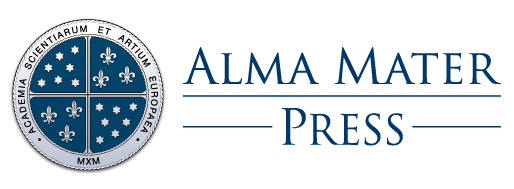Web 2.0 in the Archival Domain: Why and How in the Knowledge Economy
DOI:
https://doi.org/10.33700/2670-451X.25.1.121-130(2015)Keywords:
archives, knowledge economy, Web2.0Abstract
In the knowledge economy Web 2.0 applications used by archives are on the increase. This growing engagement has been having an influence on the way archival services and products are made available. In this article we aim to describe how Web 2.0 can work as a virtual extension for archives, by identifying impacts and benefits resulting from that innovation. The innovation is considered as inevitably linked to change and presents a number of challenges. The challenges can typically be brought together in three main areas: the technological change, the cultural change and the pedagogic change. These are all important, interdependent and must be addressed in both a strategic and an operational way if archives are to generate maximum benefit from their investment in this new communicating delivery mechanism. We restrict the attention to archival evidence-based knowledge, and examine issues in content, metadata quality, and knowledge dissemination policy that are important from the perspective of archival methodology.
Downloads
References
Bawden, D. (2011). Mind the gap: transitions between concepts of information in varied domains. In: Information ecology and libraries conference, 10th - 12th October 2011, Comenius University Bratislava, Slovakia.
Bawden, D.& Robinson, L. (2012). Introduction to information science. London: Facet Publishing.
Boylan, Patrick (2001). A Revolution in Museum Management Requires a Revolution in Museum Professional Education and Training. In: Seminar of ICOM Committees for Management (INTERCOM), Museology (ICOFOM) and Training of Personnel (ICTOP), Barcelona. Available at http://www.city.ac.uk/ictop/boylan-2001.html (accessed on 05.05.2015).
Boylan, Patrick (2002). Defining Museums and Galleries: A compilation of key, or particularly interesting or provoking, definitions of museums. In: City University London. Available at http://www.city.ac.uk/ictop/musdef.html (accessed on 05.05.2015).
Broberg, An., Milrad, M. & Pederson, T. (1999). Challenges for Design: Seeing Learners as Knowledge Workers Acting in Physical - Virtual Environments. Journal of Courseware Engineering. Available at http://www.cs.umu.se/~bopspe/publications/JCE/ (accessed on 05.05.2015).
Buckland, M. K. (1991). Information as Thing. Journal of the American Society for Information Science, 42 (5), pp. 351-360.
Cao, Dongmei (2009). Chinese Library 2.0: status and development. In: Chinese Librarianship: an International Electronic Journal. Available at http://www.iclc.us/cliej/cl27cao.htm (accessed on 05.05.2015).
Cunningham, Stuart (2002). Culture, Services, Knowledge or is content King, or are we just drama Queens? In: Communications Research Forum. Available at http://66.102.9.104/search?q=cache:7vG1fwrjxKQJ:www.creativeindustries.qut.com/research/cirac/documents/CRFOct02.pdf+information+services++knowledge+services+in+culture&hl=el (accessed on 05.05.2015).
Davies, P., & Gregersen, N.H. (2010). Information and the nature of reality:from physics to metaphysics. Cambridge: Cambridge University Press.
European Commission: Directorate-General for Education and Culture & Directorate-General for Employment &Social Affairs (2001). Making a European area of lifelong learning a reality. Available at http://europa.eu.int/comm/education/policies/lll/life/communication/com_en.pdf (accessed on 05.05.2015).
Farquhar, Adam (1995). KR and the Web. In: WWW4 by Stanford Knowledge Systems Lab, “Building Global Knowledge Webs; Knowledge Representation for the Web” Panel Session at the Fourth International Conference on the World Wide Web, Boston, December 11-14. Available at http://www.w3.org/Conference/WWW4/Panels/krp/farquhar.html (accessed on 05.05.2015).
Floridi, L. (2011a). Semantic conceptions of information. In: Zalta, E.N. (eds.), Stanford encyclopedia of philosophy (Spring 2011 edition). Available at http://plato.stanford.edu/archives/spr2011/entries/information-semantic (accessed on 05.05.2015).
Floridi, L. (2011b). The philosophy of information. Oxford: Oxford University Press. Granka, L., Joachims,T. & Geri Gay,G. (2004). Eye-tracking analysis of user behavior in www search. In Special Interest Group on Information Retrieval, pp. 478–479.
Hudson, H. E. (2001). Access to the Digital Economy: Issues for Rural and Developing Regions.In: Telecommunications Management and Policy Program, University of San Francisco. Available at http://www.usfca.edu/facstaff/hudson/papers/Access%20to%20the%20Digital%20Economy.pdf(accessed on 05.05.2015).
Jones, N. & O’Shea, J. (2004). Challenging hierarchies: The impact of e-learning. Higher Education, 48 (3), pp. 379–395. Available at http://www.elearning-reviews.org/journals/higher-education (accessed on 05.05.2015).
Kourtoumi, Tr. (2004). Identity formation or historical knowledge transmittion? The european archival institutions in the information society and the new globality. In: Conference Proceedings, ECER 2004. Available at http://www.ece.uth.gr/OPENnet/conferences/ecer2004/fullpapers/kourtoumi.pdf (accessed on 05.05.2015).
Kourtoumi, Tr. (2005). Shifting Toward a Global Learning-Oriented Society: Semantic Applications in the Archival Heritage. In: Conference Proceedings, EVA Florence 2005, 14-18 March. Available at http://www.evaflorence.it/e_programme.php-44k (accessed on 05.05.2015).
Lynch, Cl. (2001). Metadata Harvesting and the Open Archives Initiative. In: Association of Research Libraries, 217, pp. 1-9. Available at http://66.249.93.104/search?q=cache:Jb8JcfmalF8J:www.arl.org/newsltr/217/mhp.html+open+archives+metadata+harvesting+protocol+&hl=el&ie=UTF-8&inlang=el (accessed on 05.05.2015).
Malhotra, Y. & Galletta, D. (2004). Building Systems That Users Want to Use. Communications of the ACM, 47 (12), pp. 89-94. Available at http://thomas.baudel.name/Epistemologie/p88-malhotra.pdf (accessed on 05.05.2015).
Martin, R. (2002). Blurring the Boundaries of Cultural Institutions, Natural Science Collections Alliance, Ph.D. Institute of Museum and Library Services, Washington, DC. Available at http://www.imls.gov/whatsnew/current/sp060702.htm (accessed on 05.05.2015).
Murray, Ph. & Barclay, R. (1997). Information, Knowledge, and Document Management Technology. In: Knowledge Praxis Publications. Available at http://64.233.183.104/search?q=cache:KCfMFWgiaWIJ:www.ktic.com/topic6/12_INFKM.HTM+Information,+Knowledge,+and+Document+Management+Technology+&hl =el&ie=UTF-8&inlang=el (accessed on 05.05.2015).
Nogueira, Marta (2010). Archives in Web 2.0: New Opportunities. Available at http://ariadne.ac.ik/issue63/nogueira (accessed on 05.05.2015).
Powell, W. & Snellman, K. (2004). The Knowledge Economy. Annual Review of Sociology, 30, pp. 199–220. Available at 10.1146/annurev.soc.29.010202.100037 (accessed on 05.05.2015).
Smith, Bernard (2000). Digital Heritage and Cultural Content. Russian Digital Libraries Journal, 3 (3) Available at http://64.233.183.104/search?q=cache:SuKXk8IFvqAJ:www.elbib.ru/index.phtml%3Fpage%3Delbib/eng/journal/2000/part3/smithb+Smith,+Bernard+%26%238220%3BDigital+Heritage+and+Cultural+Content%26%238221%3B+Cultural+Heritage+Applications,+European+Commission,+Information+Society+Technologies,&hl=el&ie=UTF-8&inlang=el (accessed on 05.05.2015).
Veltman, Kim (2003). E-Culture, Art History and Museum Studies. Changing the way research is done. The user perspective on e-infrastructure, Brussels: European Commission, December, pp. 66-67. Available at ftp://ftp.cordis.lu/pub/ist/docs/rn/veltman.pdf (accessed on 05.05.2015).

